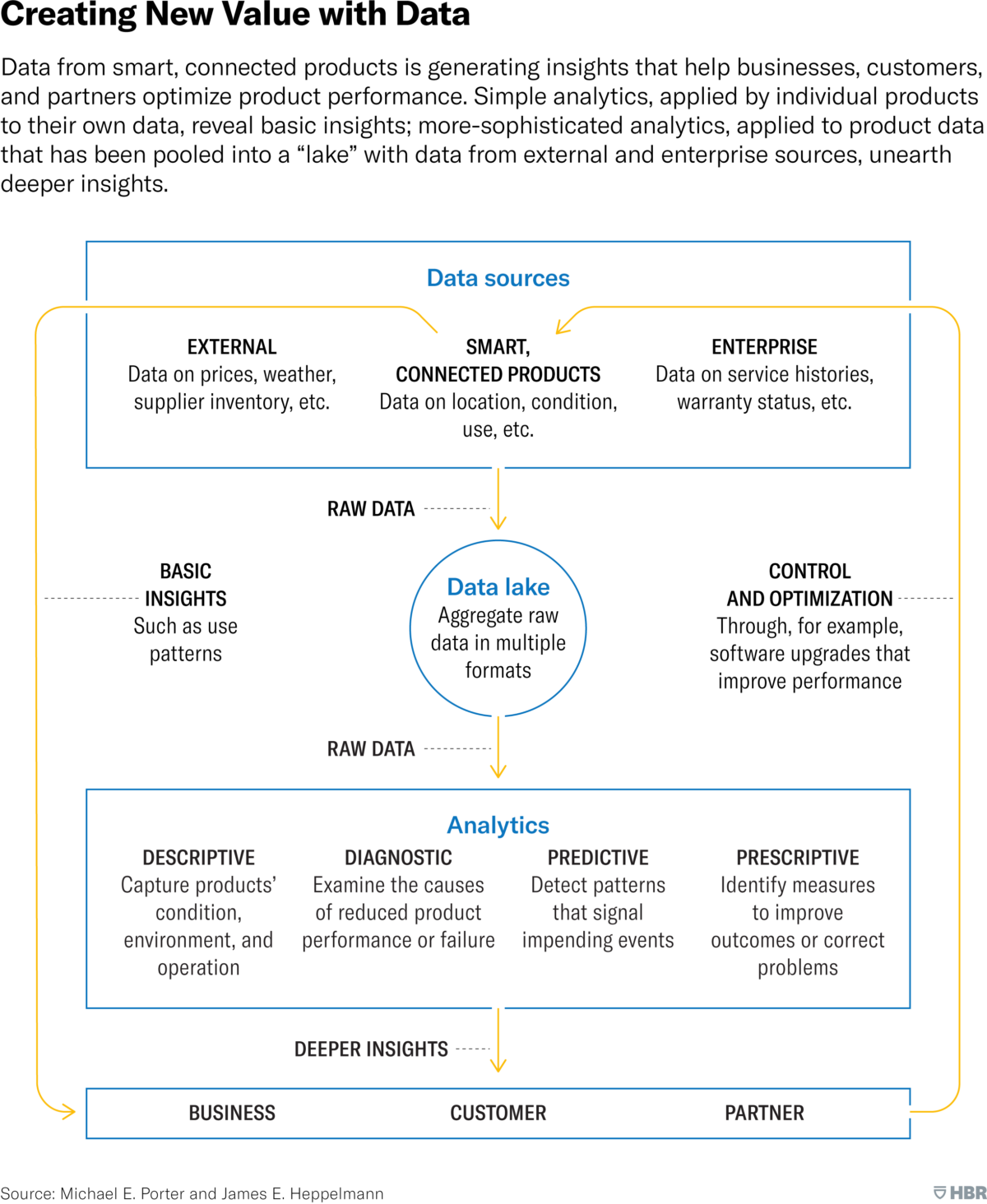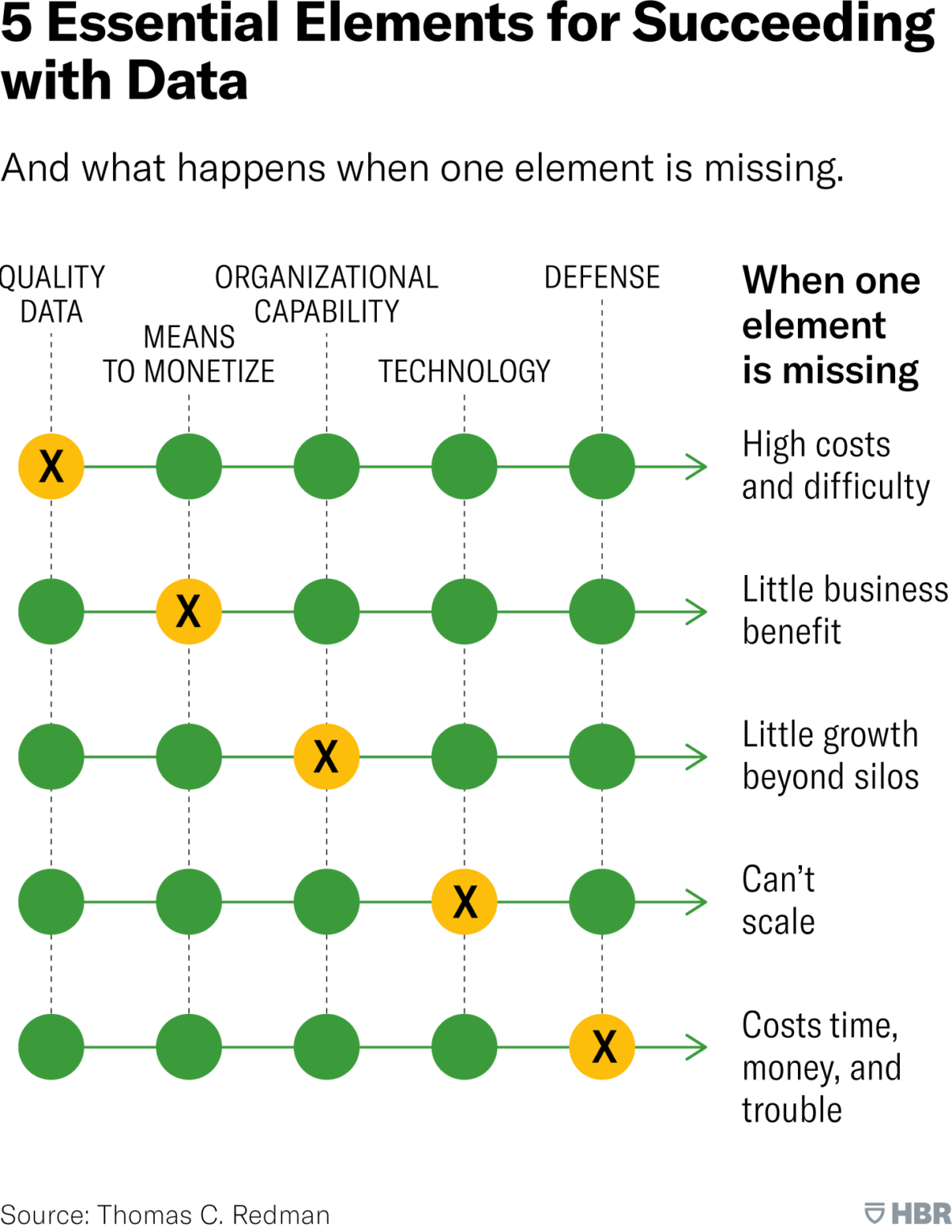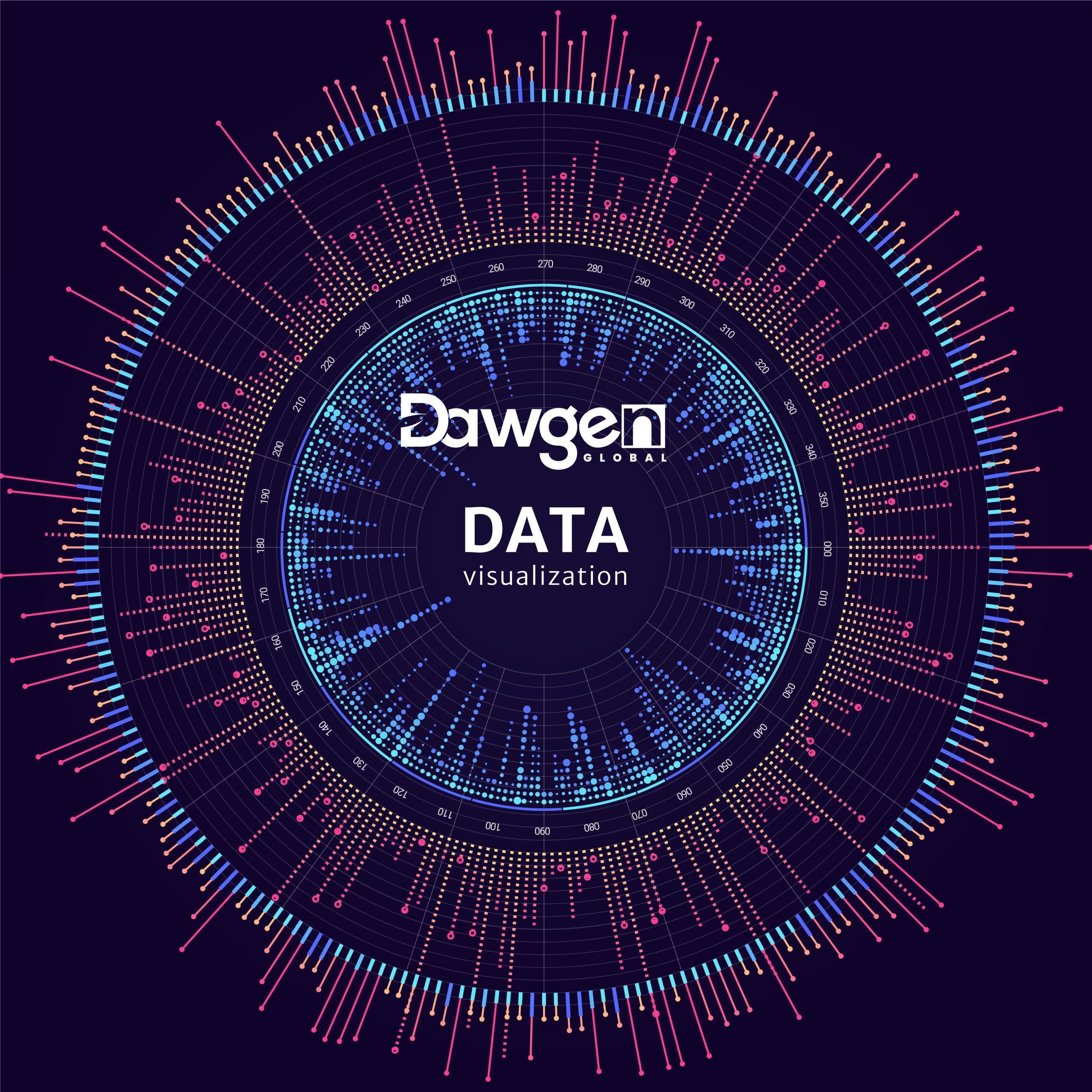In today’s data-driven world, companies increasingly recognize the immense value that data can bring to their operations. The key lies not just in the accumulation of data but in the ability to analyze and leverage it to derive actionable insights. This approach is clearly illustrated in the framework “Creating New Value with Data,” which outlines how companies can transition from basic analytics to more sophisticated data strategies.
From Basic Insights to Deeper Understanding
Initially, companies often start with simple analytics, applying straightforward algorithms to their individual data sets. This stage focuses on extracting basic insights, such as usage patterns or operational efficiencies, from raw data collected from smart, connected products. For example, data on a product’s location, condition, or usage can help a business understand how customers interact with its products, leading to minor improvements in performance or user experience.
However, the true potential of data analytics is unlocked when organizations move beyond these basic insights. By pooling data from various sources—including external data (like market trends and weather conditions), enterprise data (such as service histories and warranty statuses), and product data—into a unified “data lake,” companies can perform more advanced analyses. This aggregated raw data in multiple formats allows for a deeper dive into trends, correlations, and predictive patterns that are not apparent from isolated data sets.

Leveraging the Data Lake for Comprehensive Analytics
A data lake acts as a centralized repository where all data, regardless of its source, is stored in its raw form. This setup enables businesses to conduct various types of analytics—descriptive, diagnostic, predictive, and prescriptive.
- Descriptive Analytics: This type of analysis focuses on capturing the current state of products, including their condition, environment, and operational parameters. It provides a snapshot that helps companies understand their present standing.
- Diagnostic Analytics: Here, the goal is to identify the causes of specific outcomes, such as why a product might be underperforming or failing. By understanding these causes, companies can make informed decisions about necessary changes or improvements.
- Predictive Analytics: Moving beyond understanding what has happened or why, predictive analytics seeks to forecast future events. It detects patterns in historical and real-time data to anticipate trends or potential disruptions.
- Prescriptive Analytics: The most advanced form of analytics, prescriptive analytics, goes a step further by recommending specific actions to achieve desired outcomes or correct problems. For instance, it might suggest particular software upgrades to enhance product performance or highlight areas where additional investment is needed to improve customer satisfaction.
By integrating these different levels of analytics, companies can transition from simply reacting to data to proactively using it to drive strategic decisions, optimize operations, and enhance customer and partner relationships.

Balancing Defense and Offense in Data Strategy
The effective use of data requires a balanced approach between “defensive” and “offensive” data strategies, as outlined in “The Elements of Data Strategy.”
- Defensive Data Strategy: This approach focuses on ensuring data security, privacy, integrity, and regulatory compliance. It involves optimizing data extraction, standardization, storage, and access to maintain control over data management. The underlying architecture often relies on a Single Source of Truth (SSOT), ensuring consistency and accuracy across all data points.
- Offensive Data Strategy: In contrast, the offensive strategy aims to use data to improve the competitive position and profitability of the company. This strategy involves optimizing data analytics, modeling, visualization, and enrichment, requiring flexibility in data management. The architecture here often involves Multiple Versions of the Truth (MVOTs), allowing different departments to customize and utilize data based on their specific needs while aligning with overall strategic goals.
Essential Elements for Data Success
To succeed with data, organizations must ensure five essential elements are in place: quality data, means to monetize, organizational capability, technology, and defense. Missing any one of these elements can lead to high costs, difficulty in deriving business benefits, limited growth, scalability challenges, or costly operational inefficiencies.
In conclusion, the journey from basic to sophisticated data analytics enables companies to unlock new value from their data assets. By strategically managing their data lakes and balancing defensive and offensive strategies, businesses can achieve deeper insights, optimize operations, and maintain a competitive edge in their respective markets. Companies that master this transition are well-positioned to thrive in the data-driven landscape of the future.
Next Step!
“Embrace BIG FIRM capabilities without the big firm price at Dawgen Global, your committed partner in carving a pathway to continual progress in the vibrant Caribbean region. Our integrated, multidisciplinary approach is finely tuned to address the unique intricacies and lucrative prospects that the region has to offer. Offering a rich array of services, including audit, accounting, tax, IT, HR, risk management, and more, we facilitate smarter and more effective decisions that set the stage for unprecedented triumphs. Let’s collaborate and craft a future where every decision is a steppingstone to greater success. Reach out to explore a partnership that promises not just growth but a future beaming with opportunities and achievements.
✉️ Email: [email protected] 🌐 Visit: Dawgen Global Website
📞 Caribbean Office: +1876-6655926 / 876-9293670 📲 WhatsApp Global: +1 876 5544445
Join hands with Dawgen Global. Together, let’s venture into a future brimming with opportunities and achievements


